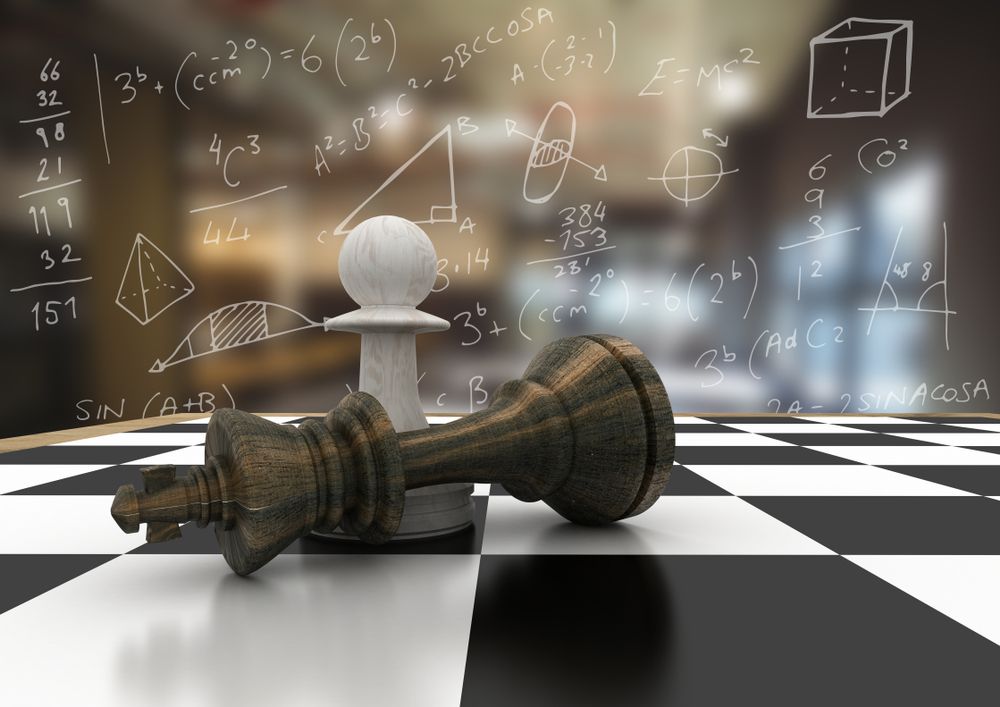
How To Calculate Long-Term Advantages In Chess
The Chess.com member kurniadigautama asked:
Something has been bothering me since I saw the game between GM Vidit Santosh and GM David Eggleston in The Chess.com Isle of Man international open tournament (round 1). In the game, we see that Vidit sacrificed a queen for two minor pieces claiming that the white pieces are not in sync and hence White’s king will be mated if Black can bring all his forces towards the king. The problem is, though we can understand the principle, calculations are very difficult. I am sure he calculated many variations and several moves ahead, but how are we able to calculate like him and learn to sacrifice pieces for long-term advantages? More importantly, how do we gather all the guts to sac a piece from the beginning? I hope you can enlighten me on this one, this will be a great help to me in improving. Thank you very much beforehand.
Silman:
Here is the start of the David Eggleston (2406) vs. Santosh Vidit (2711) game:
We will go over this game later.

I’m sure all chess players from 1000 to master level have wrestled with kurniadigautamath’s questions at some time. I wish I could toss out a few paragraphs to explain your questions; however I would do an injustice to the readers if I did. So put on your thinking cap and let’s see if I can explain this stuff in a way that is understandable to a large rating group.
By the way, though Black sacrificed his queen for two minor pieces, White had sacrificed a piece earlier, which means that Black has three minor pieces for White’s queen.
I will deal with kurniadigautama’s four main queries:
- Guts and fear— Winners are often brave, while players full of fear wonder why they lose so much.
- Calculation — How can normal players understand long-term advantages?
- Queen sacrifice — Fear! Sacrificing your queen is tough to do.
- Sync — Whose pieces are working better?
GUTS AND FEAR
If you are going to sacrifice anything (be it sound or unsound), you are showing some degree of courage. Sometimes the sacrifice is fairly simple, and that adds to your courage since you can probably see the end (or close to the end) of your attack. However deeper, more complex sacrifices engender fear, and are often avoided since courage melts away in favor of safety.
My experience has shown that for experts (2000-2199) and down, the fear factor often hits hard. That’s a shame since fear begets fear, and this unfortunate “disease” harms your game. In fact, bowing to fear might damage your chess forever.
PATTERNS ARE CALCULATION’S FRIEND
Finding a cool tactic or attack is more or less impossible if you don’t know the patterns that make them possible. Patterns include pawn structure (a must for tactics and positional situations), basic tactics, advanced tactics, and recognizing if your pieces are placed properly. All these things need to be studied and, over time, mastered if you wish to know what you’re doing. The beauty of patterns is that once you learn lots of them, you will see them immediately on the board and, in many cases, you won’t have to calculate at all (or do minimal calculation).
You will just know what to do.
Here is a typical example of calculation and patterns working side by side.
Now it is Black’s turn to show an obvious pattern. He played 15...Nxe5, which looks great, but chess isn’t a beauty contest, it’s about the patterns that Black should have known. So what are those patterns (cause if you don’t know them, you can’t play the French)?
Let’s take a look:
- The f2-pawn is only defended by White’s king while Black’s queen is glaring at that spot.
- White made a mistake earlier and now that rook isn’t guarding f2.
- In similar positions Black’s knight will take aim at f2.
- Sometimes the h2-pawn will be vulnerable.
- In some positions Black will sacrifice the exchange by …Rf8xf3.
These are all basic patterns and it makes Black’s life easy if he/she knows them. However, most don’t care about these things. Instead they just memorize a few opening moves and think it’s enough. Memorizing moves are fine, but it doesn’t help you understand the many “secret” details that the position offers.
Here is how Black should have played:
The more patterns you learn in the openings and middle games, the better your results will be.
CALCULATION AND UNDERSTANDING LONG-TERM ADVANTAGES
You asked, “How can normal players understand long-term advantages?” Of course, if you are able to calculate several moves ahead then you might think that you could understand long-term advantages. But this isn’t always so. How would you know that the moves you calculated are good? In fact, how do you know if those calculated moves are blunders?
The only way to get a chance to get through this is to (here we go!) know a lot of patterns. That way a quick glance will put you on the right path and the following calculations will (usually) lead you to good or at least logical moves.
Remember what Reti said when someone asked him how many moves ahead he could calculate: “One. But the best one!” What he means is that knowing many patterns often allows you to understand the position’s needs in a simple glance.
Now for the big question: How can you learn all those patterns? It’s actually easy, though it does take time and work:
TACTICAL PATTERNS: You already know many of them. For example:
Knowing this simple position helps you notice more complex positions, even though they are actually part of the pattern above:
The more tactical patterns you learn, the stronger your game will be.
POSITIONAL PATTERNS: Positional patterns start from the opening. For example, the French Defense.
Why is it bad? Because even if White takes on c6 the doubled pawns are actually a great thing. A quick look: 5...Qa5 (5...Qb6, putting pressure on d4 and b2, and 5...Bd7, are probably best) 6.Bxc6+ bxc6 and what has White achieved? Nothing good! Black now has two bishops (Black’s light-squared bishop might end up on the a6-f1 diagonal) and the so-called doubled pawns aren’t really doubled at all since Black, at his leisure, can play ...cxd4 (no more doubled pawns!) followed by ...c6-c5 continuing the attack on d4.
Those patterns are easy to learn, and after a bit of time you’ll know all those things. And, as you progress in the position after 4…Nc6, you’ll learn more and more patterns until calculation won’t be needed for quite a while.
The member kurniadigautama’s comment about calculation and how it works with long-term advantages is certainly NOT a simple thing. And honestly, most players will never be able to calculate accurately beyond three or four moves ahead. However, you will learn that those three or four moves mixed with basic patterns are all you need to blow your opponent off the board.
QUEEN SACRIFICES AND MAKING SURE THAT YOUR PIECES ARE IN SYNC
It’s time to look at the game kurniadigautama mentioned!
Have other kings rushed forward like my recommendation of 13...Kg6? Yes, it’s a typical pattern (many games have black kings marching forward to g6 and h6)! Here’s a well-known example:
Okay, what about queen sacrifices? Yes, they are common patterns. Here are a few battles and setups with minor pieces vs. a queen.
Here’s another, which has occurred several times:
Thinking back ages ago, I remembered that I analyzed this odd line in the late 1970s.
Black has a queen and two pawns vs. White’s two knights and bishop. It was hot for awhile, but it eventually lost its fans. Nevertheless, once in a while it reappears and smashes some poor bloke:
SYNC: BUSY PIECES ON LOVELY SQUARES
One of the most famous games that offered a queen for just two minor pieces was home computer cooking.
Looking at all the games I’ve offered, you should have noticed that one side’s pieces are working harder than the other sides. Well placed pieces are worth their weight in gold. Here’s a rundown:
Fabiano Caruana vs. Hikaru Nakamura: Black’s rooks are doing nothing, Black’s queen is sleeping, Black’s king is in trouble. Black’s pieces are not in sync! Compare it with White’s pieces and you’ll know who was boss.
The Alexander Bagrationi (2485) vs. Dmitry Skorchenko (2487) game is another example of no queen but rampaging minor pieces.
And our main game, David Eggleston (2406) vs. Santosh Vidit (2711), was over when Black’s sacrificed his queen (16...Nxd5!) for an army of in-sync rooks and minor pieces. White’s queen didn’t stand a chance!
Today’s moment of wisdom: Don’t look at the name of the piece, look at what it’s doing.



